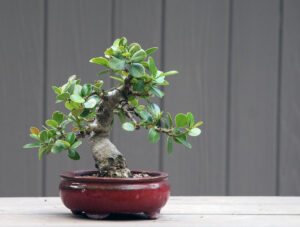Without a doubt, the best indoor ferns are nothing less than a rewarding, lush add-on to any indoor space. Luckily, there are several fern options to pick from, each with cascading and vibrant fronds that sets them apart from other indoor plants.
You will find beginner-friendly options and even more delicate species. In other words, there is an excellent indoor fern option for everyone. Many indoor ferns provide a gorgeous look in a range of indoor pots, planters and hanging baskets, delivering a unique vibe to your indoor space.
Most people have an erroneous perception that all ferns are the same. Others think that taking care of them indoors is strenuous. However, some fern species very little effort to maintain.
In this review article, we’ll take you through everything you ought to know about indoor ferns and highlight some interesting facts as well as our top seven picks of what we consider to be the best indoor ferns. We will also share some expert nurturing and care tips for ferns and answer some common questions about indoor ferns.
Let’s get right to it!
Table of Contents
Tips for Growing Indoor Ferns
Most ferns are relatively effortless to grow as long as you avoid temperature extremes, dry air, and drafts. By protecting your ferns from such conditions, you’ll enjoy beautiful indoor spaces with lush green fronds at all times.
Here are some typical indoor conditions that ensure optimal fern growth:
Light
While most ferns thrive in shady places such as forest flows, they still need ample light. Typically, ferns are only familiar with dappled light in the wild. And if you subject them to highly deficient light levels at home, you’ll get nothing but yellowing fronds and poor growth out of them.
Place your ferns on the spot near a window that either gets later afternoon or morning sun. This also means you will have to keep your ferns from strong, direct sunlight during the day, especially during summer. Failure to do so will damage the ferns’ foliage or yellow their fronds.
Soil/Compost
It’s also vital to provide the right compost, keeping in mind that most ferns are woodland or forest greenery. Therefore, they have delicate, tender roots that are only accustomed to light forest soil, which boasts high levels of decayed vegetable matter and leaf mould.
The suitable soil should be easy or free-draining to keep the roots from being waterlogged. You may also consider compost containing peat or other fibrous peat substitutes with fine sand for remarkable results. Also, ensure the compost never dries out, meaning you have to water your ferns regularly.
Humidity
The fact is, all ferns love moisture, and for that reason, you should always provide humid conditions. One way to achieve humidity is by placing their pots or planters on trays filled with damp clay granules or pebbles.
It would help if you also misted your indoor ferns at regular intervals with soft, tepid water. However, that’s not necessary if you use a humidifier to maintain high humidity levels in the room.
Fertiliser
Different ferns require different fertilisers and feeding cycles. But generally, and especially during summer, use a liquid fertiliser to feed your ferns every two to four weeks.
However, don’t mix the fertiliser to full-strength as that may damage the fern’s root system. You can instead add some drops of fertiliser to the soft, tepid water for misting.
Temperature
How low or high your ferns’ optimal temperature should depend on their place of origin and adaptability. We also know that most ferns perform poorly in cold conditions.
Ferns from tropical regions thrive best in temperatures ranging between 15ºC and 21ºC. On the contrary, ferns that come from more temperate areas love temperatures ranging from 10ºC to 16ºC.
Re-potting
You can consider re-potting your indoor ferns during springtime. However, only do so if their roots start to fill the planters. Otherwise, you can consider scrapping off and replacing the top layer of compost with fresh compost. It’s essential that you get rid of damaged fronds to facilitate new growth.
The following is the primary procedure for reporting your indoor fern:
- Pick a moisture-retaining pot that’s slightly larger than the initial container. Also, ensure the new pot has at least an extra inch of space around the fern.
- Slowly remove your fern from its initial pot and be gentle enough to ensure the root ball remains intact.
- Add fresh soil to the new pot and gently place your fern inside.
The Seven Best Indoor Ferns
This indoor fern is a typical Boston Fern with a renowned reputation for growing with lovely foliage. The foliage is green, and for that reason, other features of the plant tend to thrive around it.
The Nephrolepis Boston Fern also includes fronds that droop down as the plant ages. As a result, the leaves tend to gracefully float over the pot’s or plater’s edge to show off their exquisite unique nature.
What’s more, this fern’s growth is effortless to maintain. It thrives in many varying locations and boasts an admirable look. Because of all these features, this indoor fern is highly sought after.
The fern’s height varies between 25 and 35 cm from the top of the fern to the pot’s base. And, it only features a grower’s pot. If you want a more decorative planter, you’ll have to purchase it separately.
Features
- The fern’s height is roughly between 25 and 35 cm.
- It weighs only 300 grams hence ideal for hanging décor.
- It comes in a good quality grower’s pot
- Boasts stunning, drooping down fronds
Feeding and watering this fern is also hassle-free. You only need to apply an all-purpose general fertiliser once in a few months.. Ensure you keep the soil moist when watering the fern unless it’s in a place with high-humidity. In such a case, try misting the fern with water.
This Japanese Holly Fern has an intriguing and unique appearance that makes it a favourite household piece in many homes. No matter where you place it, this indoor fern will stand out thanks to its lush appearance and deep green colour.
Unlike other ferns, it boasts an impressive record of handling humidity changes better than many other varieties. As for the height, this fern can reach up to 60 cm, including numerous, vividly green leaflets. With such a size, the holly fern is ideal for filling large indoor spaces, especially ones with ample room for planters or high ceilings.
The plant is also renowned for its dark green, glossy leaves that grow approximately 2.5 to 6 cm long. Its leaflets tend to have unevenly shaped edges adding to its exceptional look.
Besides, this fern prefers partial shade and filtered bright light. It can also survive in low-light conditions, but only for a short while. You should, therefore, deliver ample light as soon as possible.
Features
- It displays a lush look and a deep green colour.
- Can grow to as tall as 60 cm
- Includes dark green, glossy leaves that are usually 2.5 to 6 cm long.
This holly fern can grow in varying climates. It thrives ideally at room temperature (20ºC) but can also handle temperatures as low as 10ºC. If you wish to grow this indoor fern in warmer climates, you must maintain the plant’s moisture and increase humidity. It’s also non-toxic to pets hence safe for any home.
This Asparagus fern is a rare houseplant that boasts light, feathery foliage. As such, it’s not only attractive but also ideal for indoor environments. Since it can become invasive, try to keep it dense and bushy so its tufted foliage forms a gorgeous mound.
It blends in with other floral arrangements and can be as tall as one meter. Also, this greenery is not a high-maintenance fern species. However, growing it indoors is slightly strenuous than the outdoors. It’s not tolerant to bright sunlight so you should place it in a spot with dappled shade.
This indoor fern can be somewhat demanding when it comes to watering. It can only thrive in high-humidity and hence will require regular watering. Mist the fern daily while focusing on its arching stems.
Features
- It comes with a 12 or 13 cm pot
- Boasts light and feathery foliage
- Can mature to achieve a height of up to one meter.
- Available in three varieties
Like most counterparts, this Asparagus indoor fern loves temperatures around 20ºC and nothing below 13ºC. Feed it using water-soluble or liquid all-purpose plant food once a month. However, during summer, this fern may require weekly feedings. As an added advantage, it includes a 12/13 cm grower’s pot.
Fifth on our list of top picks is this Pteris Tricolour Painted Brake Fern which features a unique bronze colour at the end of its green foliage that gives it a pretty striking look. Besides its attractive charm, it stands out from other fern species and the Pteris genus as a whole.
Its fronds bear typical traits present in other similar greenery. It boasts a classic drooping nature that makes it easily recognisable even amidst varying floral arrangements.
This indoor fern also loves bright but indirect sunlight which makes it absolutely perfect for an indoor setting. This condition is quite easy to achieve as most indoor spaces such as homes, offices, and conservatories have such lighting. Placing the fern in your bathroom is even much better due to the high humidity present within the room.
Features
- It comes with a good quality grower’s pot.
- Grows to a height of between 25 and 35 cm.
- Features a bronze colour on its foliage
- Its fronds boast a classic and unique drooping nature
Again, this fern loves moisture and therefore, you’ll have to water it about once every two weeks. It’s also crucial to mist it using water in between that watering period. By doing so, the fern will not only flourish and thrive but also colour well with time.
The greenery can be as tall as 25 to 35 cm (inclusive of the pot) and only includes a grower’s pot. You will need to buy a decorative planter separately.
The Bonsai Style indoor fern greenery is unique and highly sought after. The reason being, it not only enhances the indoors’ artistic appeal but also delivers several psychological and health benefits.
The fern is 30 cm tall and will fit in most indoor spaces. Watering it is also hassle-free as you’ll only need to submerge it in water for five minutes every six to nine days. Besides that, you should also allow the fern access to ample sunlight. Since the plant incorporates natural materials, it can only leave a positive carbon footprint.
Its moss ball feature is the standout selling point that sets it apart from other types of ferns. It’s a new potting method, and even better, it’s first fertilised for two months before being sold. You’ll only need a tray for the fern to sit on, which you will have to purchase separately.
Features
- It is 30 cm tall and will fit in most spaces
- Includes a unique moss ball feature as its pot
- Includes air refreshing capabilities
- Offers both psychological and health benefits
This fern is also very practical in purifying the air and requires very little effort to maintain and care for. This makes is an absolutely perfect indoor fern option for beginners and people who are too busy to dedicate their time and resources to the plant.
Frequently Asked Questions about the Best Indoor Ferns
Are ferns excellent household plants?
Yes. Ferns make excellent indoor greenery mainly because they are ornamental centrepieces and serve as effective air purifiers around the home. Generally, they also love moisture-rich conditions and thrive in bathrooms and bright kitchens in particular.
How long can a fern live indoors?
With due attention, care, and the right conditions, ferns can survive in an indoor setting for many years. As the fern ages, you’ll need to consider re-potting. Also, you can decide to propagate mature ferns and set up new plants around your home.
Can ferns thrive in low light?
In natural environments, ferns usually grow under larger foliage and trees. So, they can tolerate low to medium light conditions at home. Generally, keep your ferns away from direct sunlight as this can damage the foliage.
What are the best conditions for ferns?
Indoor ferns thrive with adequate moisture and humidity. Even though it’s challenging to replicate a rainforest environment in your house, you can ensure your ferns receive regular misting by using a water spray and frequent watering. You can also consider placing the planter or pot on soaked stones or pebbles that release moisture all through the day.
How do I maintain the health of ferns indoors?
As with any other houseplant, try to figure out the proper balance of moisture, feeding cycles, temperature and light. Nevertheless, indoor ferns are highly dependent on consistent moisture; which means they’ll require more frequent water cycles.
Are there benefits of keeping ferns indoors?
Yes. Besides adding aesthetic value, indoor ferns also prove helpful in purifying the air around your home. They eliminate pollutants such as xylene and formaldehyde, helping you sleep better and breathe easier. Even more impressive, their purifying properties, to some extent, can also help relieve headaches.
What makes indoor ferns popular?
Like houseplants, indoor ferns are popular because besides adding a bright colour touch, they also offer a natural structure to your space. They are also available from small varieties to larger options up to 1.8 m tall, delicate, and hardy varieties. Therefore, even without gardening skills, it’s possible to own ancient tropical greenery. Other people like their incredible texture and long flowing fronds, among other features and benefits.
What is the best soil mix to encourage the optimal growth of indoor ferns?
By now, you know that ferns do best in moisture and need constant drainage as well. You should, therefore, use soil that is fern-specific. You can try mixing rich compost with some peat moss and sand or purchase commercial soil for your indoor ferns.
Conclusion
If you intend to grow and enlarge your indoor plant collection then indoor ferns are an absolute must-have. They not only add colour but texture to your indoor environment. Besides, ferns boast a low-maintenance nature that fascinates both green thumbs and beginners alike. From bathroom décor to handing planters, indoor ferns will surely give your indoor space a rugged and striking accent.
All the seven options of indoor ferns in this list have something unique to offer. Despite varying care and maintenance requirements, each of them adds an impeccable touch of nature to your interior.
Now, quit stalling now and order your indoor fern today.








